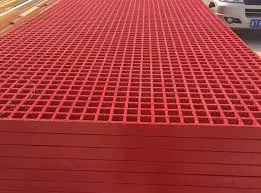
-
 Afrikaans
Afrikaans -
 Albanian
Albanian -
 Amharic
Amharic -
 Arabic
Arabic -
 Armenian
Armenian -
 Azerbaijani
Azerbaijani -
 Basque
Basque -
 Belarusian
Belarusian -
 Bengali
Bengali -
 Bosnian
Bosnian -
 Bulgarian
Bulgarian -
 Catalan
Catalan -
 Cebuano
Cebuano -
 China
China -
 China (Taiwan)
China (Taiwan) -
 Corsican
Corsican -
 Croatian
Croatian -
 Czech
Czech -
 Danish
Danish -
 Dutch
Dutch -
 English
English -
 Esperanto
Esperanto -
 Estonian
Estonian -
 Finnish
Finnish -
 French
French -
 Frisian
Frisian -
 Galician
Galician -
 Georgian
Georgian -
 German
German -
 Greek
Greek -
 Gujarati
Gujarati -
 Haitian Creole
Haitian Creole -
 hausa
hausa -
 hawaiian
hawaiian -
 Hebrew
Hebrew -
 Hindi
Hindi -
 Miao
Miao -
 Hungarian
Hungarian -
 Icelandic
Icelandic -
 igbo
igbo -
 Indonesian
Indonesian -
 irish
irish -
 Italian
Italian -
 Japanese
Japanese -
 Javanese
Javanese -
 Kannada
Kannada -
 kazakh
kazakh -
 Khmer
Khmer -
 Rwandese
Rwandese -
 Korean
Korean -
 Kurdish
Kurdish -
 Kyrgyz
Kyrgyz -
 Lao
Lao -
 Latin
Latin -
 Latvian
Latvian -
 Lithuanian
Lithuanian -
 Luxembourgish
Luxembourgish -
 Macedonian
Macedonian -
 Malgashi
Malgashi -
 Malay
Malay -
 Malayalam
Malayalam -
 Maltese
Maltese -
 Maori
Maori -
 Marathi
Marathi -
 Mongolian
Mongolian -
 Myanmar
Myanmar -
 Nepali
Nepali -
 Norwegian
Norwegian -
 Norwegian
Norwegian -
 Occitan
Occitan -
 Pashto
Pashto -
 Persian
Persian -
 Polish
Polish -
 Portuguese
Portuguese -
 Punjabi
Punjabi -
 Romanian
Romanian -
 Russian
Russian -
 Samoan
Samoan -
 Scottish Gaelic
Scottish Gaelic -
 Serbian
Serbian -
 Sesotho
Sesotho -
 Shona
Shona -
 Sindhi
Sindhi -
 Sinhala
Sinhala -
 Slovak
Slovak -
 Slovenian
Slovenian -
 Somali
Somali -
 Spanish
Spanish -
 Sundanese
Sundanese -
 Swahili
Swahili -
 Swedish
Swedish -
 Tagalog
Tagalog -
 Tajik
Tajik -
 Tamil
Tamil -
 Tatar
Tatar -
 Telugu
Telugu -
 Thai
Thai -
 Turkish
Turkish -
 Turkmen
Turkmen -
 Ukrainian
Ukrainian -
 Urdu
Urdu -
 Uighur
Uighur -
 Uzbek
Uzbek -
 Vietnamese
Vietnamese -
 Welsh
Welsh -
 Bantu
Bantu -
 Yiddish
Yiddish -
 Yoruba
Yoruba -
 Zulu
Zulu
pvc frp pipe
Understanding PVC and FRP Pipes A Comprehensive Overview
When it comes to modern piping solutions, two materials stand out due to their unique properties, versatility, and cost-effectiveness Polyvinyl Chloride (PVC) and Fiberglass Reinforced Plastic (FRP). Both types serve distinct purposes across various industries, including construction, plumbing, and waste management. As we explore the characteristics, advantages, and applications of PVC and FRP pipes, it becomes clear why they are popular choices in today’s market.
What is PVC?
Polyvinyl Chloride, commonly known as PVC, is a synthetic plastic polymer that has gained immense popularity since its invention in the early 20th century. It is a cost-effective option for piping systems and boasts a range of advantageous properties. PVC pipes are lightweight, resistant to corrosion and chemicals, and have a smooth inner surface that allows for efficient water flow.
PVC is commonly used in plumbing applications, irrigation systems, and sewage disposal due to its versatility. Moreover, it is also used in the construction of electrical conduits and various building materials, showcasing its adaptability across different contexts.
What is FRP?
Fiberglass Reinforced Plastic (FRP) is a composite material made of a polymer matrix reinforced with fiberglass fibers. This combination results in a strong, durable, and lightweight material suitable for various applications. FRP pipes exhibit remarkable resistance to corrosion, making them ideal for transporting chemicals and waste materials.
One of the unique aspects of FRP is its ability to withstand extreme temperatures and pressures. This property, combined with its resistance to environmental factors, makes it a preferred choice in the construction of chemical plants, water treatment facilities, and offshore oil platforms.
pvc frp pipe

Key Differences Between PVC and FRP
While both PVC and FRP offer significant advantages, their application can vary significantly based on specific needs
1. Strength FRP pipes generally have a higher strength-to-weight ratio compared to PVC, making them suitable for high-stress applications. 2. Corrosion Resistance Both materials offer good resistance to corrosion, but FRP pipes excel in aggressive chemical environments, where higher durability is essential. 3. Temperature Tolerance FRP can handle higher temperatures than PVC, which can deform when exposed to extreme heat. 4. Cost PVC is generally more affordable, making it the preferred choice for residential plumbing and irrigation, while FRP is usually used in industrial applications despite its higher cost.
Applications
1. PVC Applications - Residential plumbing - Drainage systems - Irrigation - Electrical conduits
2. FRP Applications - Chemical processing plants - Water treatment facilities - Marine applications - Oil and gas pipelines
Conclusion
In summary, PVC and FRP pipes are indispensable materials in modern infrastructure and industrial applications. Choosing the right type of pipe depends on various factors, including the specific environmental conditions, budget constraints, and performance requirements. Both materials offer unique benefits that make them well-suited for different tasks. As technology advances and the demands for efficient piping systems continue to grow, understanding the strengths and weaknesses of PVC and FRP can help consumers and industries make informed decisions for their projects. Whether opting for the cost-effective and versatile PVC or the robust and resilient FRP, both options contribute significantly to the efficiency and durability of modern plumbing and industrial systems.









